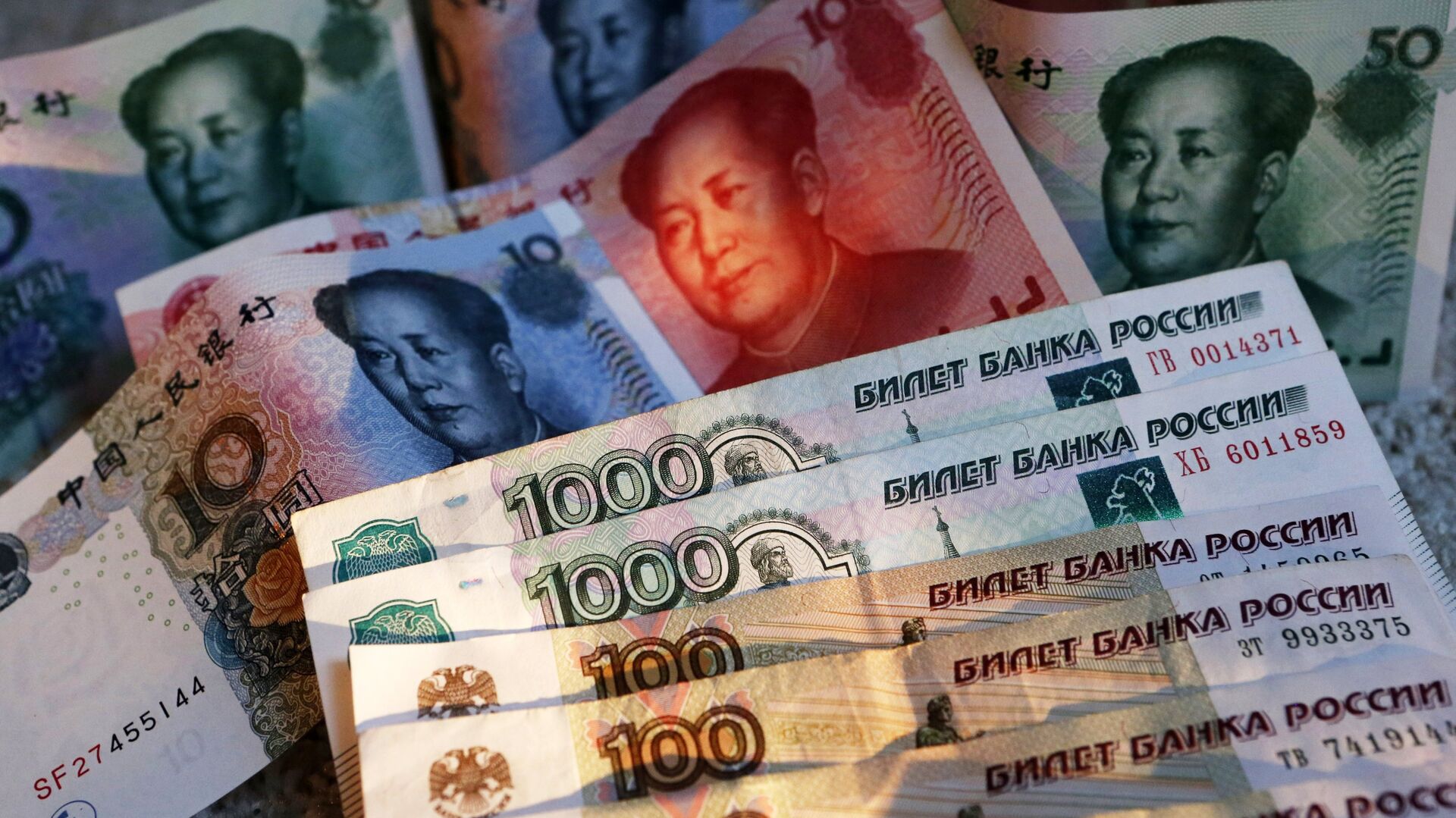https://sputnikglobe.com/20240902/russia-trade-partners-build-alternative-payments-systems-circumventing-us-dollar-1119982976.html
Russia, Trade Partners Build Alternative Payments Systems Circumventing US Dollar
Russia, Trade Partners Build Alternative Payments Systems Circumventing US Dollar
Sputnik International
Russia and various trade partners are working to strengthen alternative currencies and payments systems, reducing global reliance on the US dollar and Western-based financial networks.
2024-09-02T05:02+0000
2024-09-02T05:02+0000
2024-09-02T05:02+0000
elvira nabiullina
russia
china
upi
alba
crypto currency
cryptocurrency
russian central bank
barter
payment
https://cdn1.img.sputnikglobe.com/img/107145/52/1071455222_0:129:3187:1921_1920x0_80_0_0_e91eda67f64d6896a38ccdab9cd25ab2.jpg
Russia and various trade partners are working to strengthen alternative currencies and payments systems, reducing global reliance on the US dollar and Western-based financial networks.Moscow has been adapting to Western financial pressure since 2014 when trade restrictions were imposed after Russia's reunification with Crimea.“There are risks in using the global financial networks,” said Russian central bank governor Elvira Nabiullina in 2018. “Therefore, since back in 2014 we have been developing our own systems.”Western economic aggression intensified in 2022, causing Moscow to increasingly make use of its System for Transfer of Financial Messages (SPFS). The financial messaging system is used in place of SWIFT, the Western system that has traditionally served as the de-facto global standard. SPFS is reportedly used by 556 organizations in 20 countries, with foreign organizations’ use of the system more than doubling after 2022.Russia has also made efforts to integrate its financial system with that of Iran, with Moscow’s Mir card payment platform now working with Tehran’s Shetab system.Meanwhile, banking and messaging systems developed by China and India, two major global economic powers in their own right, have seen increasing use in financial transactions involving Russian entities. China's Cross-Border Interbank Payment System (CIPS) processed more than 6.6 million transactions last year amounting to $17.3 trillion. India’s Unified Payments Interface (UPI) has also expanded rapidly, threatening to pose a significant challenge to SWIFT’s dominance.Central bank currencies and cryptocurrencies round out the selection of financial innovations utilized by Russia to maintain its robust and growing economy, with both technologies threatening to further undermine the US dollar’s global reserve currency status.One last strategy can be revived from the Soviet era as Russia looks into economic barter with China and other countries. The direct exchange of quantities of one commodity for another cuts out the need for a currency entirely, harkening back to the days of the socialist-aligned Comecon economic organization. The tactic has been employed by various countries subjected to Western sanctions such as Cuba and Venezuela, which engage in barter with several Latin American neighbors via the ALBA–TCP bloc.
https://sputnikglobe.com/20240418/euros-share-in-swift-transactions-hits-historic-low-in-march-1117992232.html
https://sputnikglobe.com/20240304/irans-proposal-to-set-up-swift-analogue-added-to-brics-agenda-1117133269.html
russia
china
Sputnik International
feedback@sputniknews.com
+74956456601
MIA „Rossiya Segodnya“
2024
John Miles
https://cdn1.img.sputnikglobe.com/img/07e8/01/19/1116388787_0:0:1316:1316_100x100_80_0_0_77e70d36afd983012b1c5d38ddb84156.jpg
John Miles
https://cdn1.img.sputnikglobe.com/img/07e8/01/19/1116388787_0:0:1316:1316_100x100_80_0_0_77e70d36afd983012b1c5d38ddb84156.jpg
News
en_EN
Sputnik International
feedback@sputniknews.com
+74956456601
MIA „Rossiya Segodnya“
Sputnik International
feedback@sputniknews.com
+74956456601
MIA „Rossiya Segodnya“
John Miles
https://cdn1.img.sputnikglobe.com/img/07e8/01/19/1116388787_0:0:1316:1316_100x100_80_0_0_77e70d36afd983012b1c5d38ddb84156.jpg
russia swift alternatives, russia alternative payment system, alternative financial messaging systems, central bank currencies us dollar, us dollar alternatives, russian economy, barter economy, barter trade
russia swift alternatives, russia alternative payment system, alternative financial messaging systems, central bank currencies us dollar, us dollar alternatives, russian economy, barter economy, barter trade
Russia, Trade Partners Build Alternative Payments Systems Circumventing US Dollar
New currencies and financial systems are being built to circumvent Western economic pressure on Moscow.
Russia and various trade partners are working to strengthen alternative currencies and payments systems, reducing global reliance on the US dollar and Western-based financial networks.
“Moscow keeps finding ways to keep the country's economy going,” writes business reporter Huileng Tan, describing Russia’s response to Western sanctions imposed after the launch of its special military operation against Ukraine in 2022. “Russia's trade partners, too, are looking for ways to continue doing business with the country via alternative systems to rival the Western-led, US dollar-dominated global financial order.”
Moscow has been adapting to Western financial pressure since 2014 when trade restrictions were imposed after Russia's reunification with Crimea.
“There are risks in using the global financial networks,” said Russian central bank governor Elvira Nabiullina in 2018. “Therefore, since back in 2014 we have been developing our own systems.”
Western economic aggression intensified in 2022, causing Moscow to increasingly make use of its System for Transfer of Financial Messages (SPFS). The financial messaging system is used in place of SWIFT, the Western system that has traditionally served as the de-facto global standard. SPFS is reportedly used by 556 organizations in 20 countries, with foreign organizations’ use of the system more than doubling after 2022.
Russia has also made efforts to integrate its financial system with that of Iran, with Moscow’s Mir card payment platform now working with Tehran’s Shetab system.
Meanwhile, banking and messaging systems developed by China and India, two major global economic powers in their own right, have seen increasing use in financial transactions involving Russian entities. China's Cross-Border Interbank Payment System (CIPS) processed more than 6.6 million transactions last year amounting to $17.3 trillion. India’s Unified Payments Interface (UPI) has also expanded rapidly, threatening to pose a significant challenge to SWIFT’s dominance.
“It is significant that UPI can also be used to bypass the SWIFT banking system, enabling payments with sanctioned countries such as Russia, thereby weakening US financial hegemony,” wrote international relations analyst Evan Freidin earlier this year.
Central bank currencies and cryptocurrencies round out the selection of financial innovations utilized by Russia to maintain its robust and growing economy, with both technologies threatening to further undermine the US dollar’s global reserve currency status.
One last strategy can be revived from the Soviet era as Russia looks into economic barter with China and other countries. The direct exchange of quantities of one commodity for another cuts out the need for a currency entirely, harkening back to the days of the socialist-aligned Comecon economic organization. The tactic has been employed by various countries subjected to Western sanctions such as Cuba and Venezuela, which engage in barter with several Latin American neighbors via the ALBA–TCP bloc.




